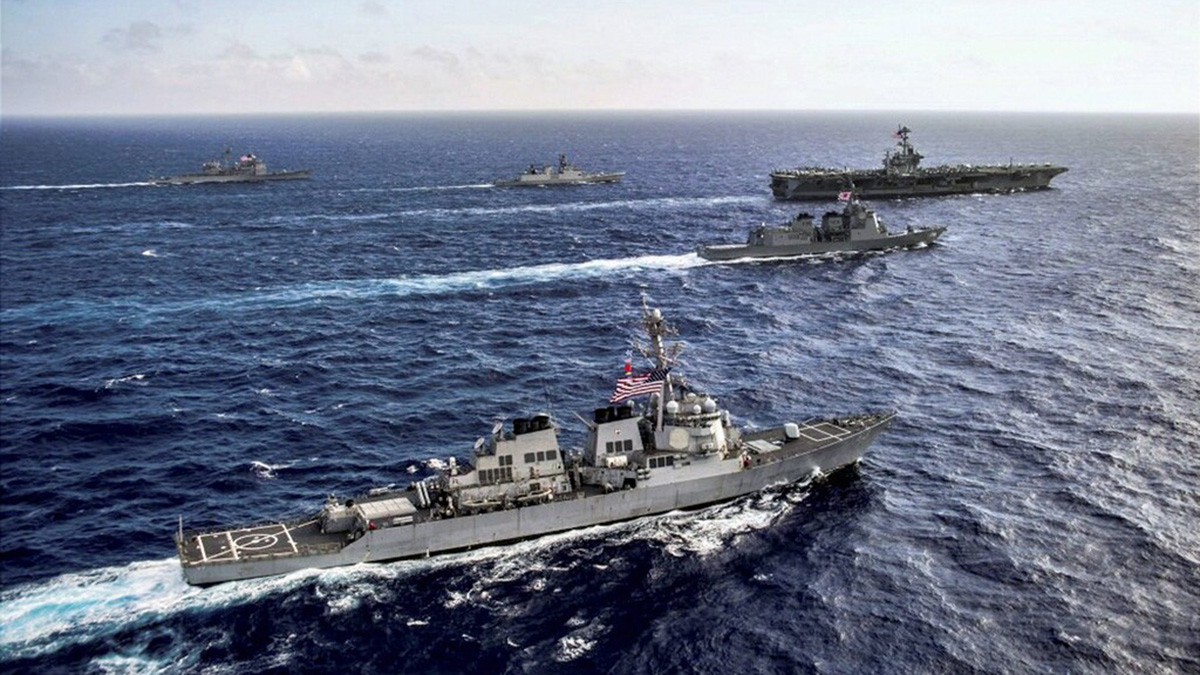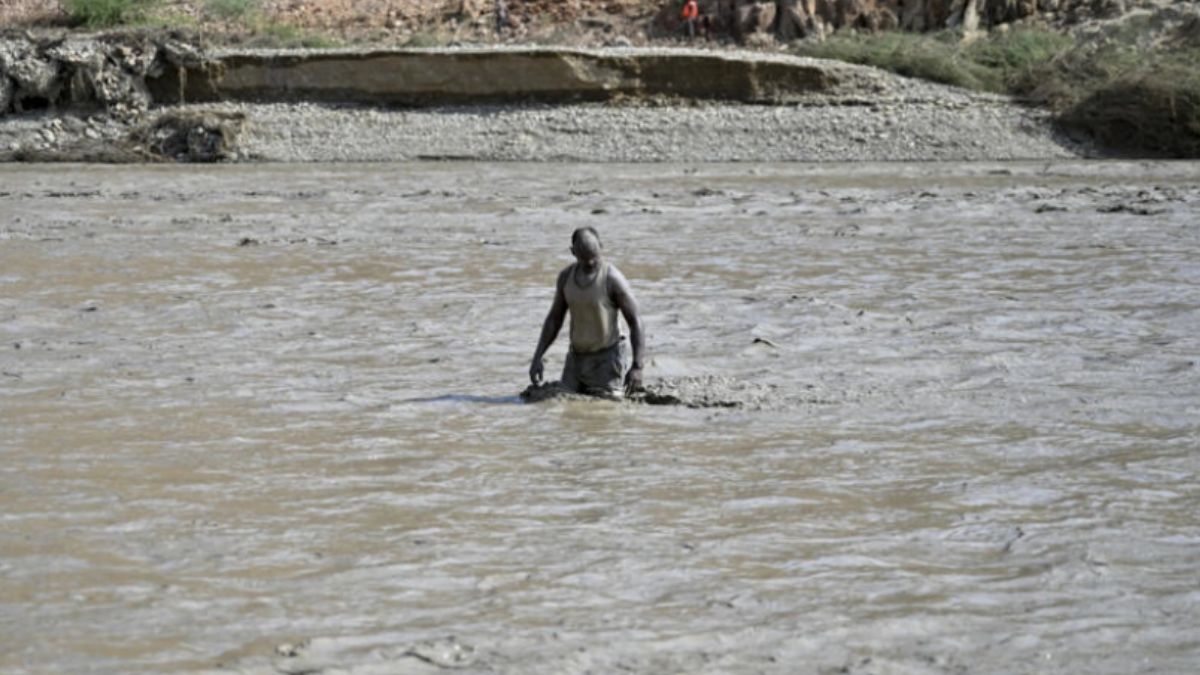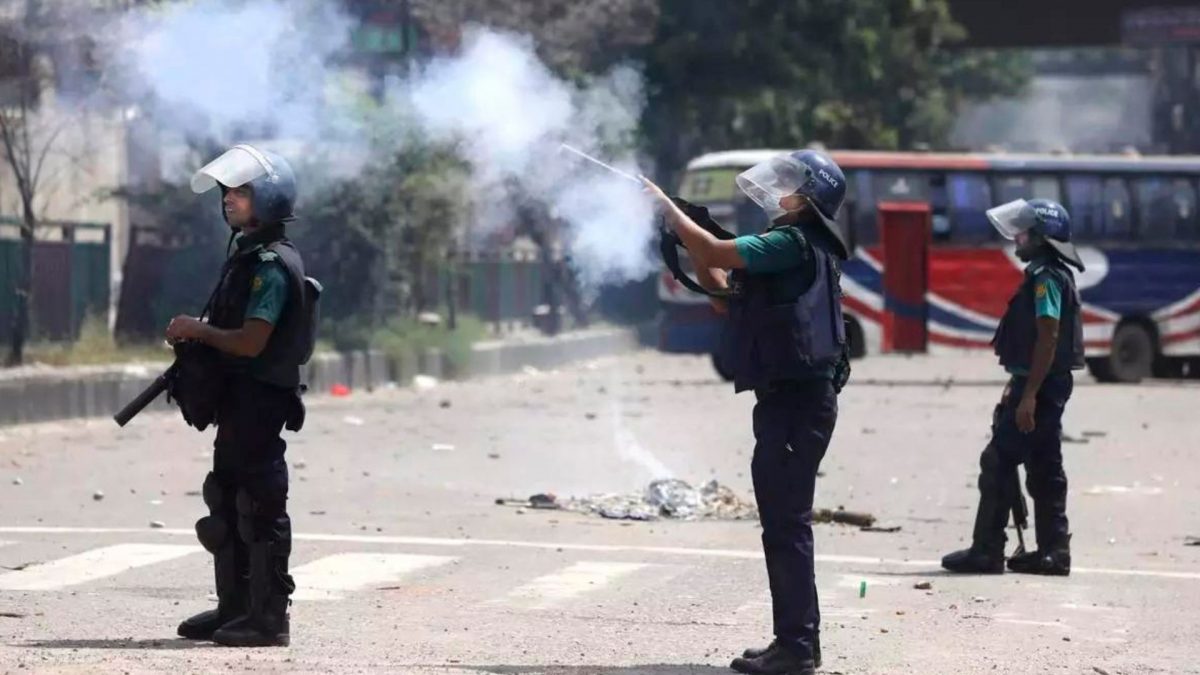As Malabar 2024 unfolds, the Quad nations unite in a strategic show of naval strength to counterbalance China’s expanding influence, reinforcing their commitment to ensuring security and stability in the Indo-Pacific read more
)
(File) Ships during the sea phase of tri-Nation Malabar 2017 Exercise comprising India, Japan and US navies, in Bay of Bengal near Chennai coast. PTI
As the 28th iteration of the Malabar naval exercise unfolds in October 2024, the strategic significance of this event is magnified by the escalating tensions in the Indo-Pacific, primarily driven by China’s assertive naval manoeuvres. This year’s exercise, hosted by India in the Bay of Bengal, unites the naval forces of the Quad nations—India, the United States, Japan and Australia—aiming to enhance interoperability and collective maritime security against a backdrop of increasing Chinese influence in the region.
Quad’s naval might on display
The Malabar Exercise 2024, which begins from today till 18 October, will showcase a formidable array of naval assets from the participating nations. While the US Navy will field the USS Dewey, an Arleigh Burke-Class Destroyer with its integral helicopter and P8 Maritime Patrol Aircraft, Japan’s Maritime Self-Defence Force (JMSDF) will join the exercise with JS Ariake, a Murasame-class destroyer. Australia will deploy HMAS Stuart, an Anzac Class Frigate with its MH-60R helicopter and P8 Maritime Patrol Aircraft, thereby enhancing the collective firepower and situational awareness of the Quad.
Countering China’s growing influence
The timing of the Malabar Exercise is particularly pertinent given China’s increasing naval presence in the Indian Ocean Region (IOR). Over the past decade, China has expanded its maritime footprint, establishing bases and forming strategic partnerships with regional players, including Bangladesh’s development of a Chinese-supplied submarine base. This expansion raises alarms for India and its allies, who are wary of China’s growing assertiveness, especially in the South China Sea and around critical maritime routes.
China’s People’s Liberation Army Navy (PLAN) has evolved into the world’s largest navy, with over 370 vessels and a rapidly expanding submarine fleet, projected to reach 65 by 2025. This significant increase poses a direct challenge to India’s maritime security and strategic interests in the IOR. In response, the Quad nations are enhancing their military cooperation through robust naval exercises like Malabar, which serves as a platform to not only demonstrate their capabilities but also to develop effective strategies for countering Chinese naval expansion.
Advancing anti-submarine warfare capabilities
The focus of this year’s Malabar exercise on advanced anti-submarine warfare reflects the Quad’s collective response to the growing underwater threat posed by China. India’s integration of the P-8I Poseidon aircraft, among the most sophisticated maritime patrol aircraft globally, emphasises the country’s commitment to enhancing its surveillance and anti-submarine capabilities. Despite strong ties with the US, issues of trust persist, particularly regarding data-sharing arrangements for sonobuoy operations. Nevertheless, ongoing discussions about the sale of advanced sonobuoys to India mark a significant step toward improving operational interoperability.
Furthermore, the introduction of MH-60R Seahawk helicopters, designed for both anti-submarine and anti-surface warfare, will enable Indian naval forces to extend their operational reach. As India enhances its naval capabilities, the Malabar Exercise plays a crucial role in ensuring that all four Quad partners can operate seamlessly together.
Trust and cooperation among Quad navies
The evolution of the Malabar Exercise from a bilateral initiative between India and the US to a multilateral framework reflects the changing dynamics of maritime security in the Indo-Pacific. The participation of Japan and Australia signifies a commitment to collective security, but challenges remain. Historical suspicions, particularly between India and the US, highlight the need for ongoing dialogue and cooperation to build trust and operational synergy among the Quad nations.
As the exercise progresses, the focus will remain on not only refining tactical coordination but also on fostering shared values and strategies to address common threats in the region. This is particularly relevant as China continues to employ “grey zone” tactics, seeking to assert its influence without provoking direct confrontation.
A unified front against maritime threats
The Malabar 2024 exercise is not merely a showcase of military strength. It represents a strategic initiative aimed at counterbalancing China’s maritime ambitions in the Indo-Pacific. As the Quad nations demonstrate their commitment to a free and open maritime order, the successful execution of this exercise will bolster regional security and enhance cooperative efforts against common threats. In the face of rising geopolitical tensions, the importance of the Malabar Exercise as a platform for strategic dialogue and military collaboration cannot be overstated.

 1 month ago
8
1 month ago
8
)
)
)
)
)
)
)
)
)
)
)
)
)
)
)
)
)
)
)
)
)
)
)
)
)
 English (US) ·
English (US) ·